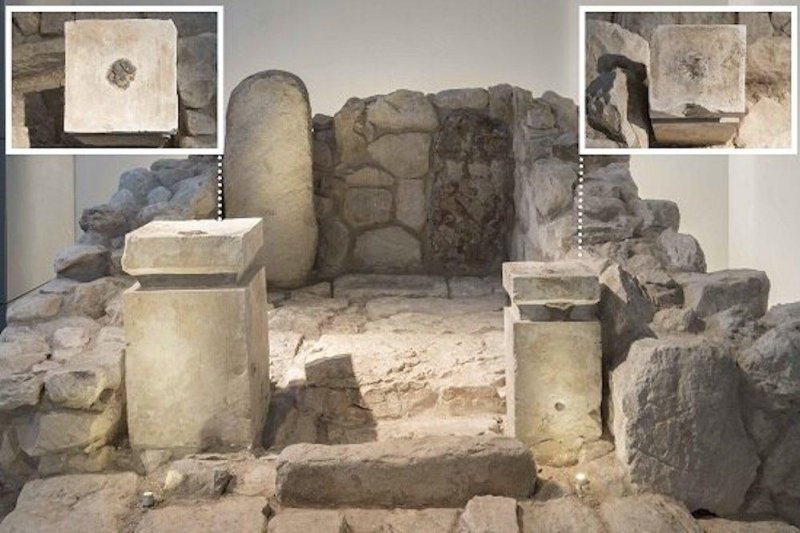
Chemical signatures of cannabis, frankincense found on Iron Age altars in Israel
by Brooks HaysMay 29 (UPI) -- Two Iron Age altars found inside an ancient shrine in Israel once held cannabis and frankincense, according to chemical analysis of the artifacts.
The two limestone altars, one smaller altar and one larger altar, were found at the entrance to the Holy of Holies section of the shrine, located in the historic city of Tel Arad.
The Holy of Holies section is typically defined by four pillars and described in the Hebrew Bible as the place where God dwells.
Researchers observed a dark organic substance stained onto the surface of the ancient altars. Chemical analysis of the organic residues revealed the presence of cannabis and animal dung on the smaller of the two altars.
The animal dung likely helped the cannabis burn during ritual ceremonies. The analysis revealed the presence of frankincense and animal fat in the larger of the two altars.
The chemical analysis of organic molecules on the two altars was performed by two separate labs. Both labs found residues of three kinds of cannabinoids: teterahydrocannabinol, THC; cannabidiol, CBD; and cannabinol, CBN.
The findings -- published this week in the Journal of the Institute of Archaeology of Tel Aviv University -- suggest cannabis was appreciated for its psychoactive qualities in ancient Judah.
"This is the first time that cannabis has been identified in the Ancient Near East; Its use in the shrine must have played a central role in the cultic rituals performed there," lead study author Eran Arie, researcher with the Israel Museum in Jerusalem, said in a news release.
On the larger of the two altars, scientists suspect the use of animal fat helped the evaporation of the frankincense.
Because frankincense came from Arabia, its presence in an ancient Israeli shrine suggests the people of ancient Judah engaged in the south Arabian trade network as early as 750 to 715 BC, prior to the region's control by the Assyrian Empire.
(0) Leave a comment
upi.com/7010256